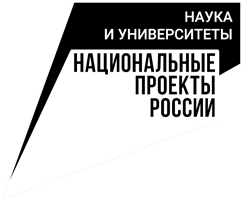152nd meeting of the seminar
«Mathematical modeling of geophysical processes: direct and inverse problems»
The seminar is devoted to the consideration of various aspects of mathematical modeling of physical processes in the atmosphere, hydrosphere and active layer of land, associated with solving problems arising in the study of the problems of climate change and the natural environment.
Seminar Organizing Committee
| Leaders: |
Doctor of Physics and Mathematics A.V. Glazunov (Marchuk Institute of Numerical Mathematics of RAS) Doctor of Physics and Mathematics I.A. Repina (A.M. Obukhov Institute of Atmospheric Physics of RA) Doctor of Physics and Mathematics V.M. Stepanenko (RCC MSU, Geographical Faculty of Moscow State University) |
| Secretary: |
A.V. Debolsky (RCC MSU, A.M. Obukhov Institute of Atmospheric Physics of RAS). |
PROGRAM
17:15
| V.P. Yushkov | Faculty of Physics, Lomonosov Moscow State University |
DENSITY FLUCTUATIONS IN A TURBULENT ATMOSPHERE. THEORY OF UNCERTAINTIES.
The report shows that further development of the theory of turbulence can be directed to a detailed analysis of the hypotheses and approximations of the classical theory of turbulence, the assessment of density, pressure, entropy and sound velocity fluctuations, small-scale baroclinicity and adiabatic motions in the statistical ensemble of Lagrangian particles.
The theoretical apparatus of such an approach can be the Hamiltonian formalism of Hilbert spaces, which describes the statistical expansion of fluctuations of the potentially available turbulence energy. The intermittency and measurement uncertainty of the statistical characteristics of turbulent mixing are associated with adiabatic pressure fluctuations and violation of the Boussinesq approximation. It is shown how the correlation scales of these fluctuations can be related to density and entropy fluctuations. On the basis of hypotheses about the relationship between dynamic and adiabatic pressure fluctuations and about the mechanism of entropy fluctuation equalization, numerical estimates of the intensity and width of the adiabatic noise spectrum were made and an empirical relationship was established between the rate of generation of adiabatic fluctuations and the dispersion of fluctuations in the speed of sound.
The calculations performed also show that in single-point measurements in wind tunnels in the dissipation region, the main contribution to the spectrum comes from adiabatic fluctuations with a simple Boltzmann frequency distribution.
The seminar will be held in the form of a webinar on the Zoom platform.
Topic: семинар "Математическое моделирование геофизических процессов: прямые и обратные задачи".
Time: February 10, 2022 05:15 PM Moscow (GMT+3)
Join Zoom Meeting: https://us02web.zoom.us/j/83254292451?pwd=SzZCbUlOM2pPSm9UUDNlYjcrRCtGdz09
Meeting ID: 832 5429 2451
Passcode: 689263
Video recordings of the seminar are available on our youtube channel.
For communication on all issues related to the work of the seminar, please contact the academic secretary Andrey Vladimirovich Debolsky at and.debol@srcc.msu.ru

